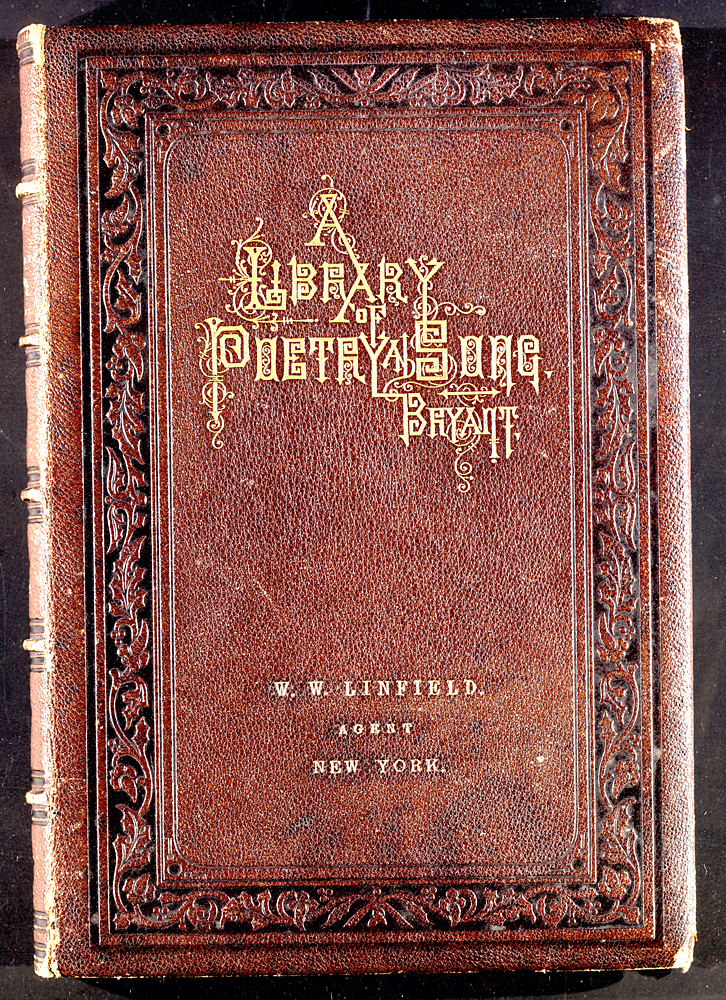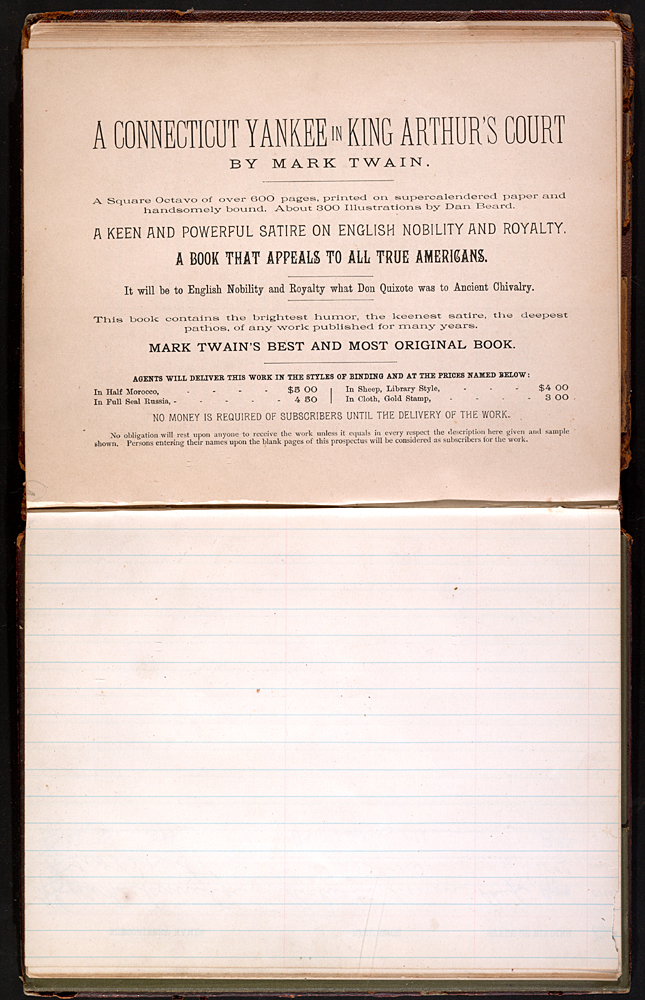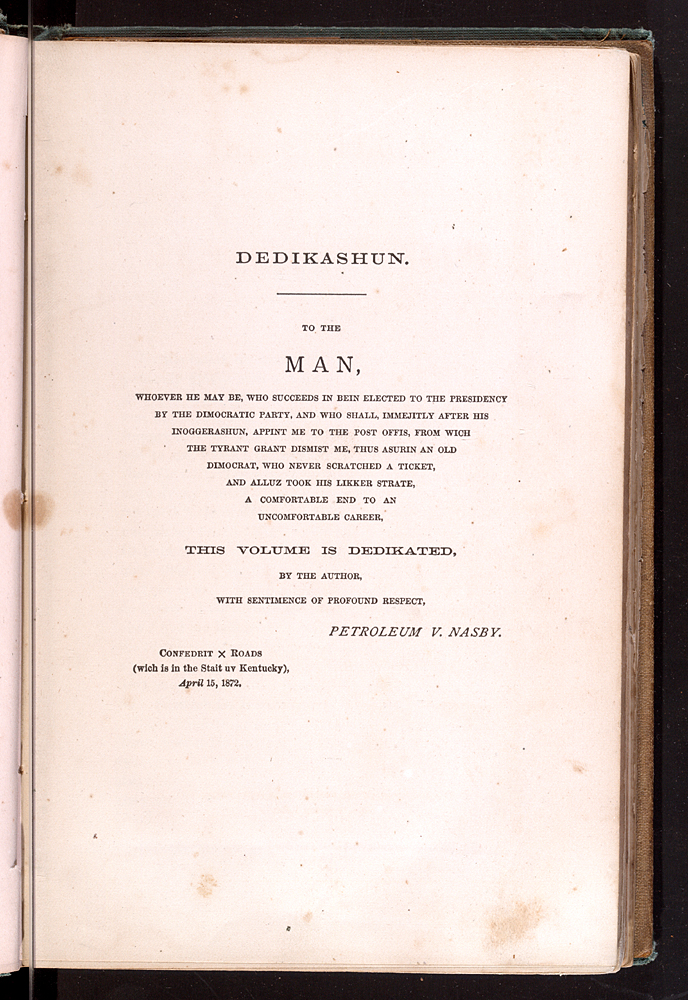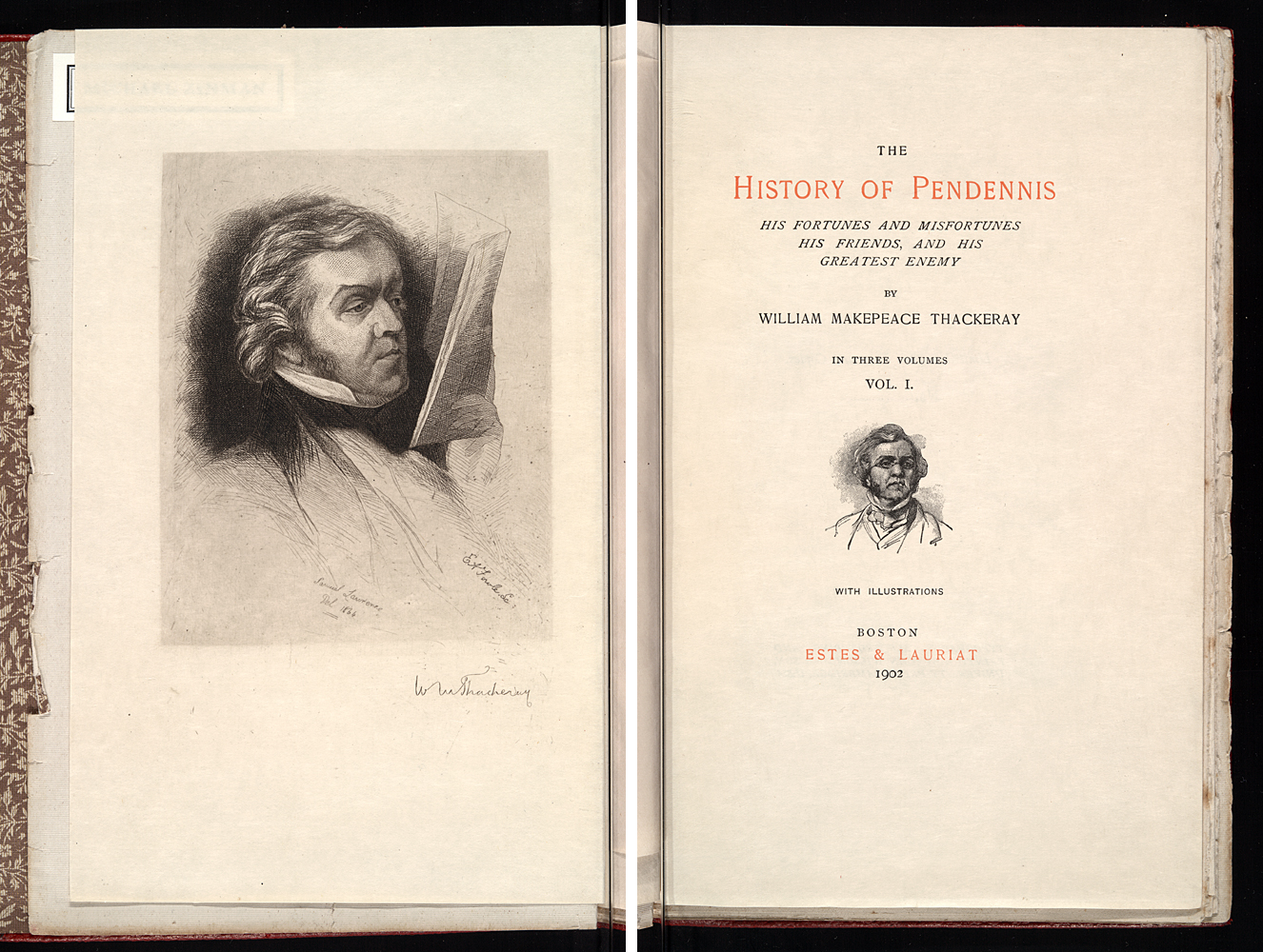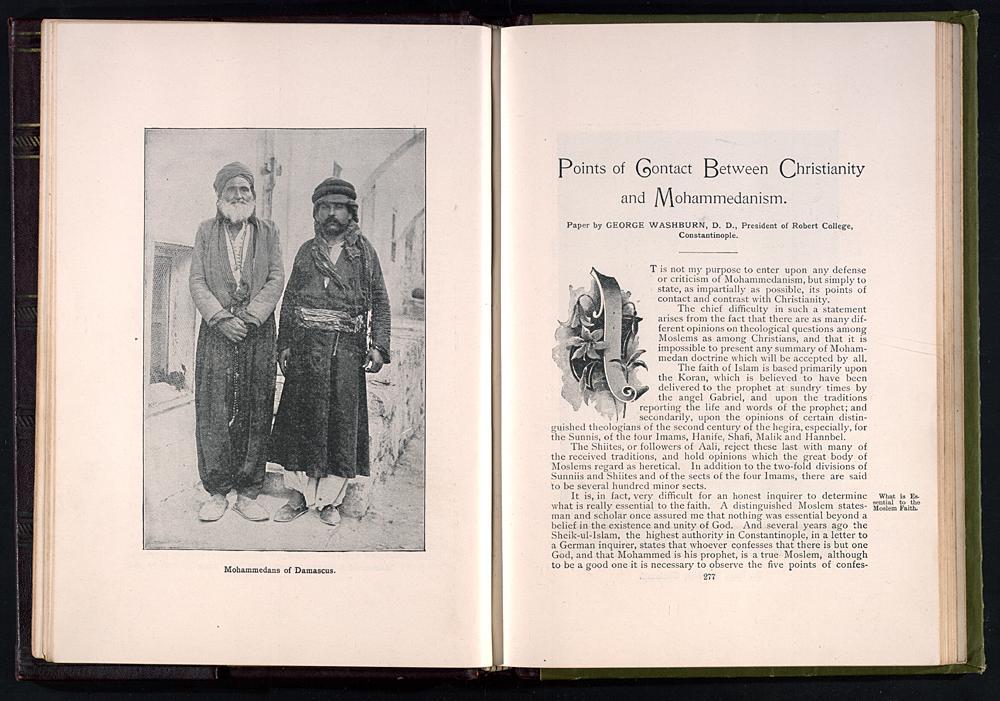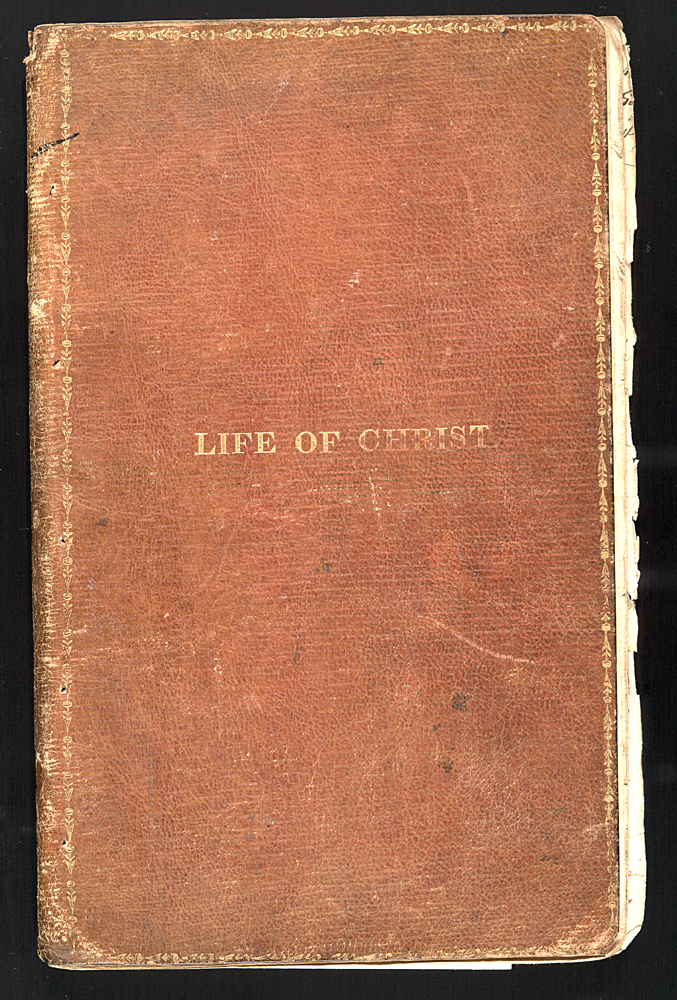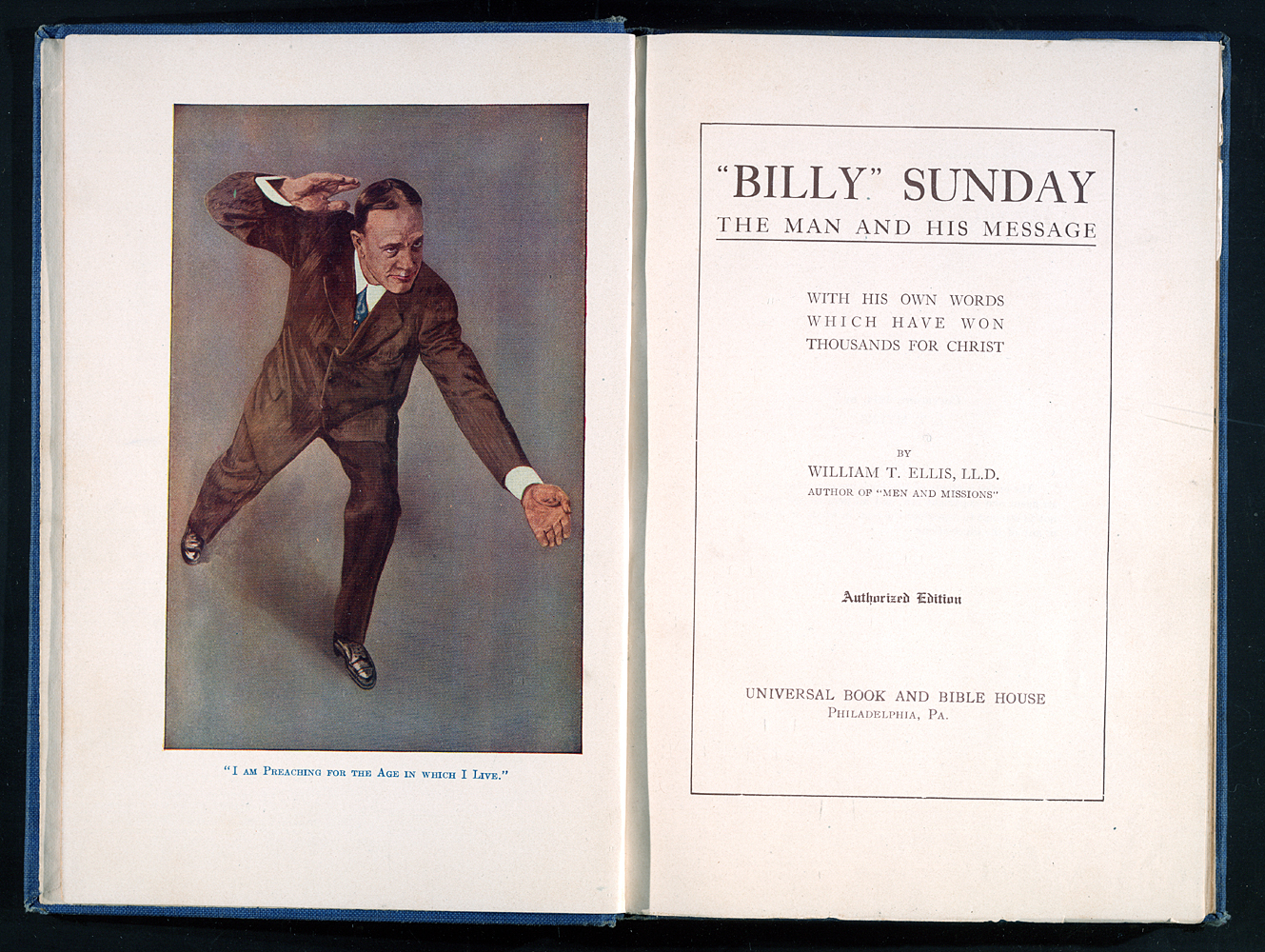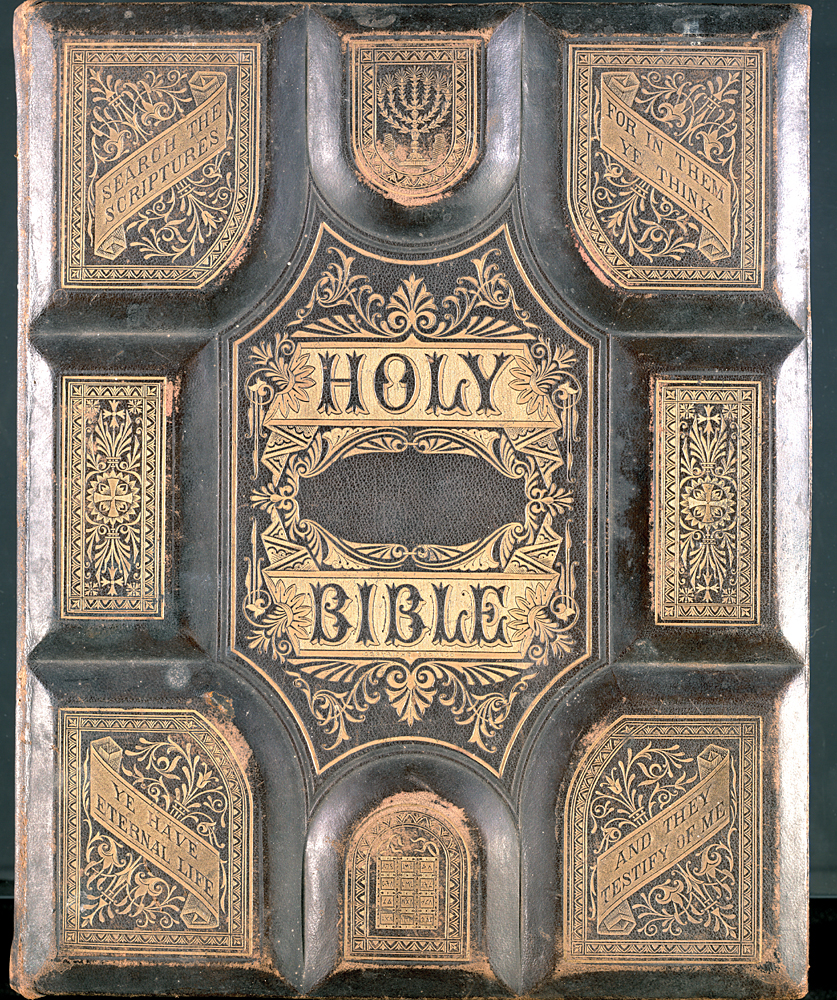Fig. 1: Bryant's anthology, a compilation of familiar works, enjoyed immense popularity as a subscription book, perhaps because of its reputation as a useful reference work, perhaps because of its editor's literary reputation. In this copy, the subscription leaves are completely filled with the names of wealthy New Yorkers, many with Wall Street addresses, who have ordered the most expensive edition for fifteen dollars each. The agent whose canvassing book this is obviously thought sufficiently highly of this work, or perhaps was simply trying to impress his clientele, to have his personal information, "W.W. Linfield / Agent / New York," stamped in gilt on the cover.
Fig. 2: Twain was by far the most famous author to exploit subscription publication. A Connecticut Yankee was the second of Twain's works to be published by his nephew's firm. Most of Twain's early works had been published by the American Publishing Company, of Hartford, Connecticut, whose fortunes became closely tied to Twain's.
Fig. 3: Many of the American "literary" authors in the Zinman Collection are still well known: e.g., Cooper, Hawthorne, Longfellow, Stowe, and Whitman. Popular writers were also (perhaps more expectably?) sold by subscription, among them Lafcadio Hearn, S. Weir Mitchell, Booth Tarkington, and the author of this work, David Ross Locke, better known under his pseudonym as Petroleum V. Nasby. Locke was one of the most powerful political satirists of his day. In Petroleum V. Nasby, he caricatured the Copperhead, a Northerner who sympathized with the South during the Civil War. The Struggles compiles letters by Nasby that had originally been published in the various newspapers that Locke edited. Here, they are joined by a "dedikashun," "prefis," and introduction.
Fig. 4: English as well as American authors were published through subscription. This canvasser's sample contains text pages and illustrations for a large paper edition of Thackery's Works, to be published in a "limited edition" of 1,000 numbered copies, supposedly making it an exclusive and desirable set. The publisher, Estes & Lauriat, was known for well-edited and well-printed sets of European classics that filled a demand in well-to-do households and libraries previously been met only by European imports. Estes & Lauriat products contrasted with most such American editions of works by foreign authors. Usually inferior productions based on mediocre foreign editions and shoddy translations, printed on cheap paper, and distinguished only by detailed illustrations and elaborate but weak bindings, they were meant to appeal to the eye rather than to the mind.
Fig. 5: The 1893 World's Columbian Exposition in Chicago is only one of the world's fairs represented in the Zinman Collection. Other works commemorate the 1876 Philadelphia Centennial and the 1904 St. Louis Exposition. This work focuses on one aspect of the 1893 Exposition, but--like other such publications-- opened up the world and its fairs to those unable to experience their diversity firsthand.
Fig. 6 and Fig. 7: Extremely popular, this work was reprinted throughout the nineteenth century by both regular and subscription publishers. The Confidential Circular to Agents that Wm. Garretson and Company published for agents of their new and improved edition of this work, sold in the late 1860s and early 1870s, claims that
"this is one of the best works to sell now before the American people, and our agents have found it such. One sold fifty-seven in three days; another lady agent sold twenty-six the first day and a half; . . . [o]ld experienced agents acknowledge it to be one of the best books to sell they ever saw."
Fig. 8: Popular contemporary religious figures were ideal candidates for biographies. Billy Sunday (1862-1935), a popular American evangelist, practiced an unconventional preaching style contemporaries called "acrobatic preaching." His highly theatrical and physically intense sermons elicited an emotional response from his audience. Sunday, a prominent figure on the itinerant preaching circuit, could attract over 10,000 people to his meetings.
Sunday was no fan of higher education, but, according to Ellis, "the greatest day in his crowded life was the thirtieth of March, 1914, which he spent with the students of the University of Pennsylvania at Philadelphia." The "how to sell" brochure attached to this copy of the canvassing book contains many recommendations, including one from Edgar Fahs Smith, Provost of the University of Pennsylvania.
Fig. 9: Family Bibles were, from early on, an especially lucrative part of the subscription book trade. The April 2, 1898 issue of Publisher's Weekly notes that "[n]ine-tenths of all large family Bibles are sold through canvassers." In addition to full-plate illustrations and maps, Bible history, indexes of Bible passages and dictionaries of the Bible, family Bibles contained special pages for recording births, marriages, and deaths in the family. Some, such as this one, even contained album pages in which to insert photographs of family members. The bindings were elaborate, meant to impress visitors.
